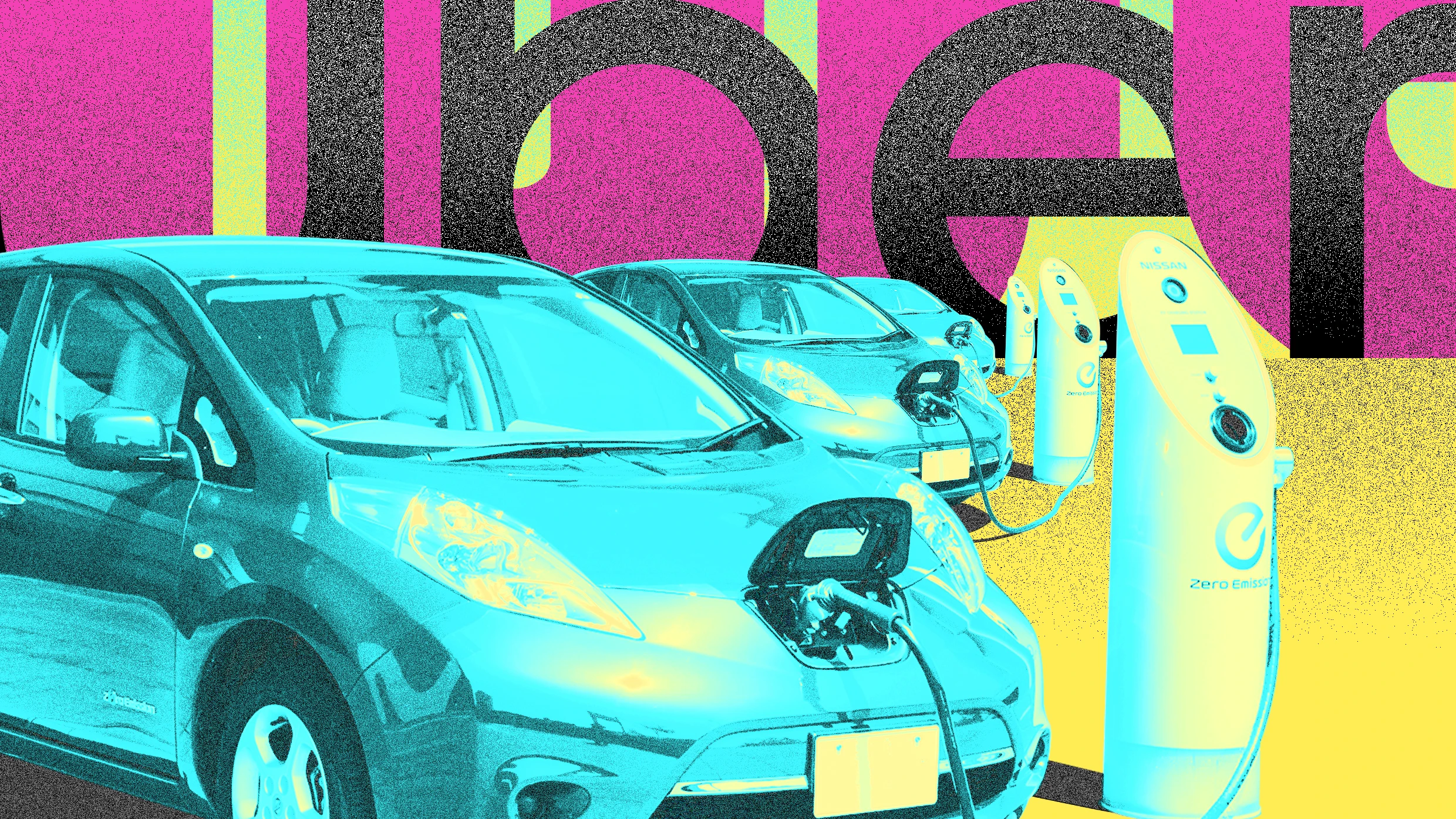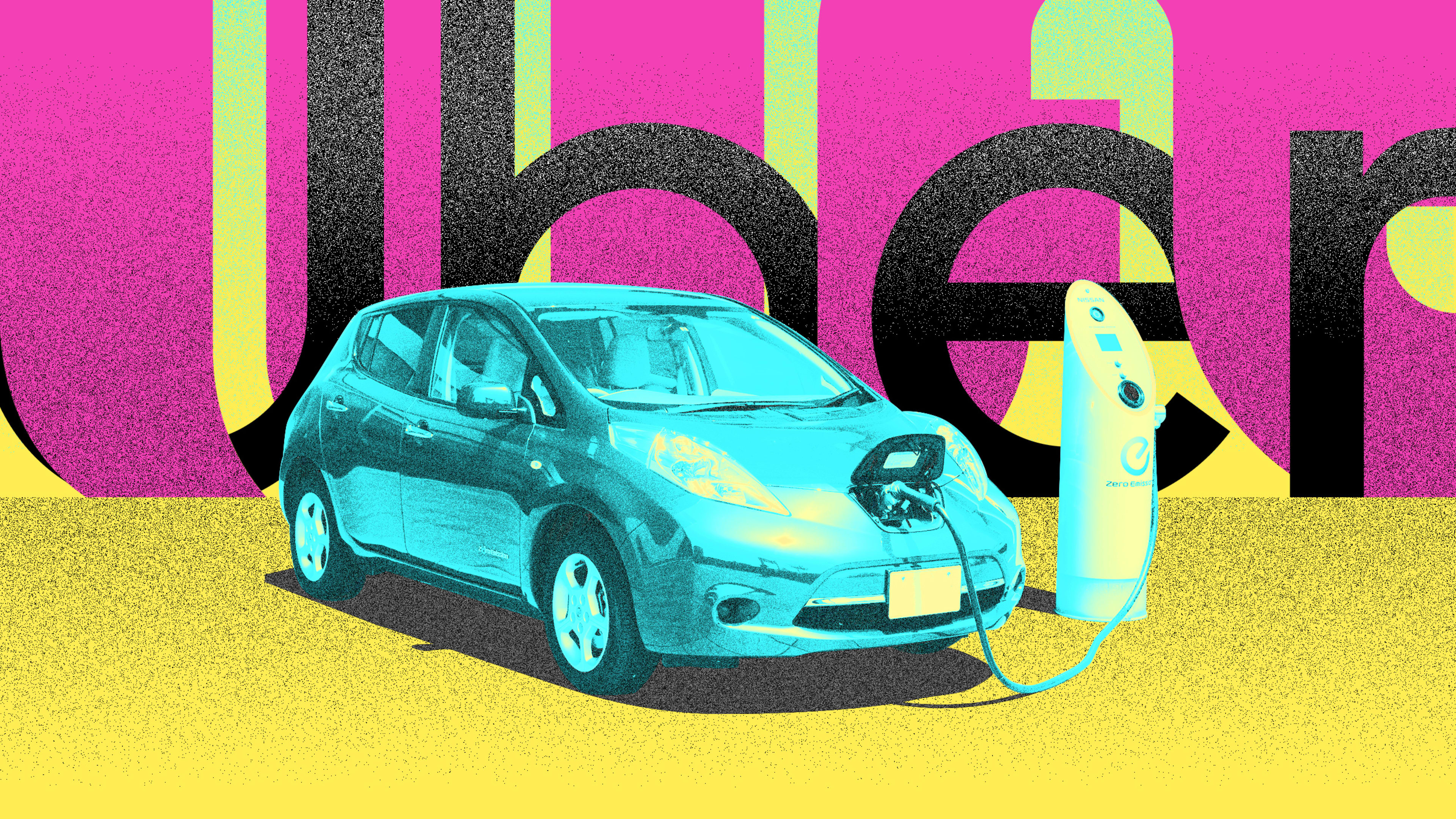Recently, Los Angeles Mayor Eric Garcetti told the Financial Times that he believed he and the city had the power to mandate ride-hailing companies like Uber and Lyft to use only electric vehicles. “We have the power to regulate car share,” he said. “We . . . are looking closely at mandating that any of those vehicles in the future be electric.”
The mayor’s words have received pushback from critics noting that most Uber and Lyft drivers own their own cars, rendering the idea that they should be expected to electrify their own vehicles unfair and unrealistic. But putting the onus on the companies themselves to push for electrification and clean up their act makes sense, as there is a lot they can do without negatively impacting drivers or riders.
Research suggests that the average ride-hailing trip creates about 50% more pollution than the average traditional car trip. Even worse, studies show that over half of all ride-hailing trips in major cities are made by people who would have otherwise used cleaner means of transit to get to their destination.
Ride-hailing today is actually increasing the number of miles travelled by car, far from the narrative the companies have pushed about getting rid of the need for personal vehicle ownership. The Sierra Club is working to get bolder electric commitments from Uber and Lyft by drawing public attention to the growing body of negative data that surrounds ride-hailing. Transportation is the largest source of climate-disrupting emissions in the nation, making this work more critical than ever.

Here’s where electric vehicles come into the picture. Lyft alone said that it had 1.9 million drivers in 2019. Lyft separately has a fleet of cars that it rents to drivers by way of its “Express Drive” program. Participating drivers typically put over 35,000 miles per year on their cars. Even if an electric vehicle mandate were limited to drivers participating in “Express Drive” campaigns—if drivers were limited to electric rentals—that would result in more decarbonization for the public policy investment than individual household rebates, along with greater overall reduced pollution.
Ultimately, it is for these reasons—among others—that I’m confident both Uber and Lyft should adopt an all electric-vehicle fleet for the vehicles that they rent to drivers. Uber and Lyft could be the sustainable leaders they so often claim to be.
But there are also political reasons. I have been in the policy-influencing business for over 20 years. When looking at these types of decisions, traditionally, the question of importance is: Who gets hurt, who gets helped, and who doesn’t care? Considering these variables objectively usually leads one to an optimal solution.
Certainly that is the case here. Let’s start with who benefits. It is no secret that climate change is a preeminent concern today. Voters cite it as one of the issues they care most about. At the same time, however, mayors of major U.S. cities are struggling to show that they are serious about tackling the problem. To stave off the worst impacts of climate change, we have to reduce global emissions by 7.5% per year worldwide—but progressive mayors are not even close to achieving that in their own cities.
Working with ride-hailing companies to reduce emissions is, in this light, low-hanging fruit.
At the same time, reducing local pollution would exact massive benefits in terms of public health. According to Fresh Energy, “Road transportation emissions cause 53,000 premature deaths per year nationally.” The American Lung Association, meanwhile, estimates that transportation pollution causes $1.15 in damages per gallon of gas—costs that are borne by people in the way of health insurance and public health care infrastructure funded by public tax dollars.
Automakers also stand to benefit, considering that initiatives like this one will result, among other things, in many more EV sales—especially from those car companies that haven’t yet exhausted their access to the $7,500 federal tax credit they’re entitled to for the first 200,000 vehicles they sell. That includes pretty much every carmaker except Tesla, Nissan, and GM, which means that there are right now over 15 automakers selling electric vehicle models that still have tax credits to share—roughly $22 billion worth. To say they’re incentivized to sell more electric cars would be an understatement.
There will of course be the folks who remain opposed to this effort. This includes, obviously, the companies themselves, which don’t want to be in the vehicle business in the first place. There would also be a fair amount of headache involved for them in trying to allocate rides to drivers in accordance with how much charge each individual vehicle has remaining, along with helping drivers charge their vehicles at available stations.
A majority of people, however, won’t notice much of a change: This includes people who use ride-hailing services. Pricing won’t be impacted, and we all may in fact come to prefer categorically quiet and comfortable driving experiences. We’ll all surely benefit from cleaner air in our communities and a healthier climate.
All of which is to say, the potential benefits of an electric vehicle mandate for Uber and Lyft do indeed seem to outweigh the costs. It’s important to note that, generally, change is hard, and mandates are often perceived as unwelcome and intrusive—anti-American, even. But this mandate should be viewed objectively for what it is: a net-positive for most stakeholders, and an easy policy to pass that takes one step forward in the fight against climate change.
Jigar Shah is the president and cofounder of Generate Capital.
Correction: We’ve updated this article to remove an incorrect reference to the total number of cars in Lyft’s Express Drive program.
Recognize your brand’s excellence by applying to this year’s Brands That Matter Awards before the early-rate deadline, May 3.
